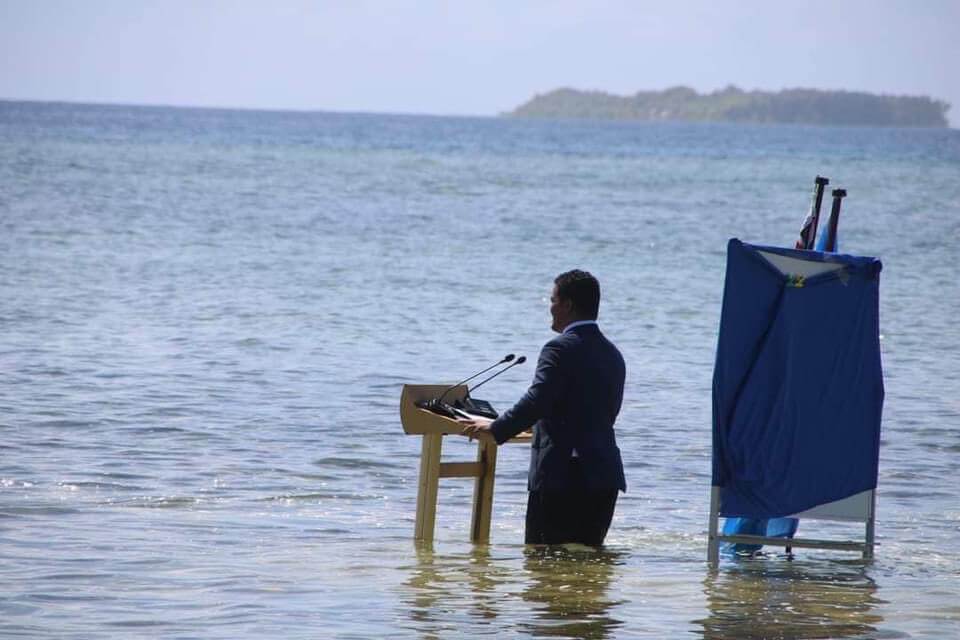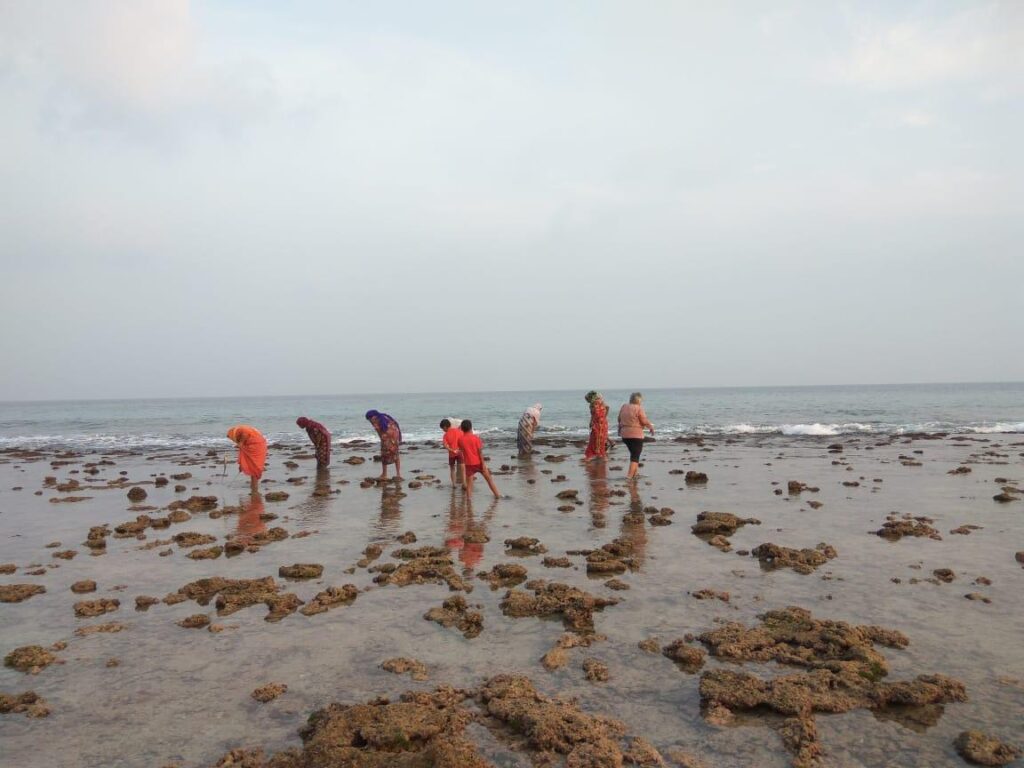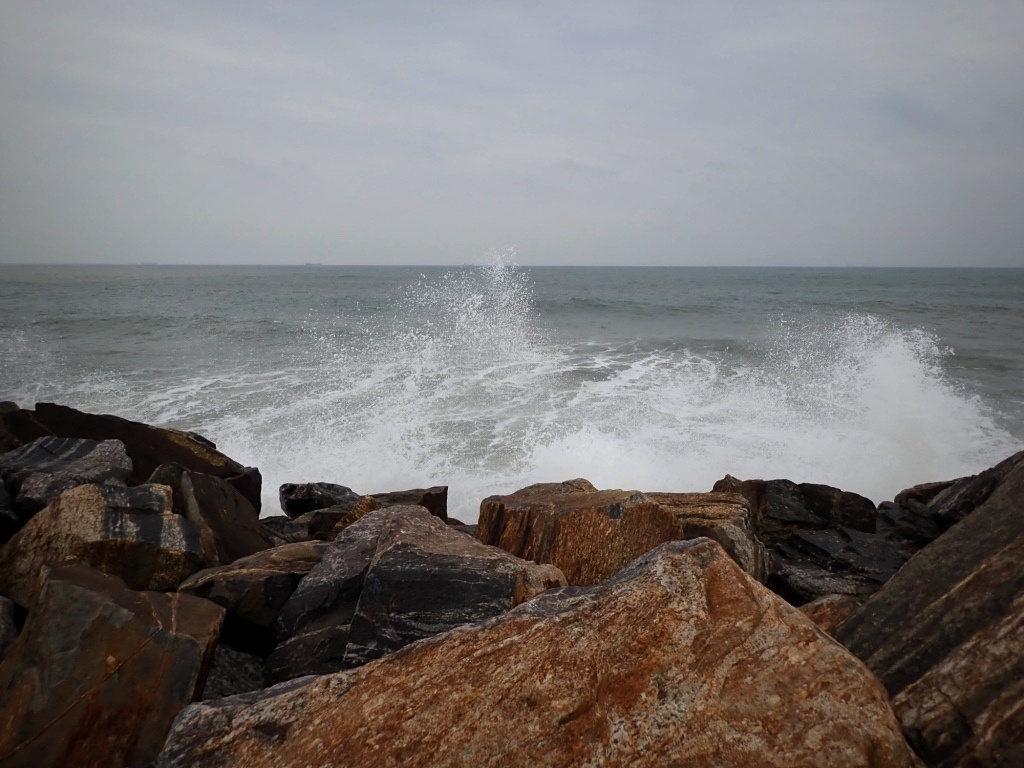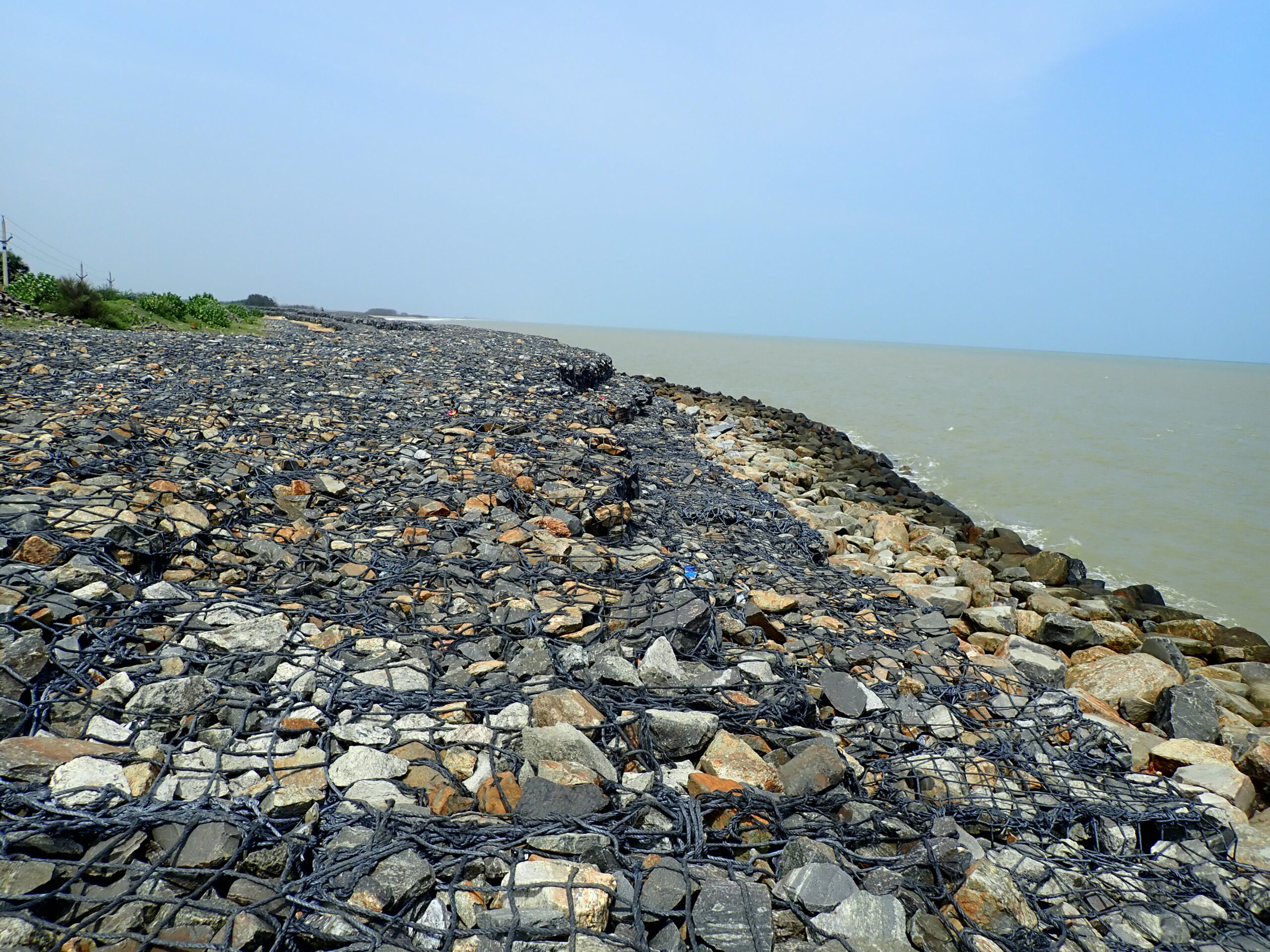New and unprecedented climate disasters that are unfolding around the world tell us that our existing emergency disaster risk and reduction responses are no longer enough to tackle the climate crisis. Over the course of 2021 alone, the world has witnessed calamitous floods across western Europe, extreme heatwaves in northwest America, forest fires in Turkey, Greece, Italy, and the US, as well as a devastating famine in Madagascar.
Closer to home, India faced its own spate of extreme disasters last year which were associated with the changing climate. These included the glacial lake outburst floods which wreaked havoc in Uttarakhand’s Chamoli district, flash floods of the worst kind experienced since decades in Goa, and monsoon-induced floods and landslides in Kerala and Tamil Nadu. India’s limited emergency and rapid action response measures were no match for these disasters partly due to the immense scale at which they occurred, as well as their compounding nature. Studies indicate that these disasters are not mere ‘natural hazards’, but in fact symptoms of deeper changes in the integrated global climate system, accumulated over a period of time.
The gradual pace of such accumulated changes has caused climate scientists and policymakers to identify them as “slow onset” events or processes, distinguishing them from extreme climate events. These refer to phenomena such as sea-level rise, ocean acidification, glacier retreat, increasing temperatures, desertification, biodiversity loss and forest degradation.
Reactive emergency measures are not sufficient to tackle the scale of losses arising from slow onset events. There is a need for newer modes of adaptation planning that account for the cascading and hybrid nature of these processes, as I’ve written about in an earlier piece. Such modes of planning must be based on a clear understanding of the thresholds and tipping points of various interacting human and natural ecosystems across which the impacts of slow onset events span.
Slow Onset Events Are Unfolding Around Us
At the recently concluded COP26 in Glasgow, countries on the frontlines of climate impacts such as small island nations and least developed countries underscored the importance of slow onset processes. They argued that besides losses arising from extreme climate disasters, slow onset events warrant a separate frontier of climate finance, in addition to mitigation and adaptation measures.

Although there is no universally acknowledged definition of slow onset processes, an emerging consensus around the definitions of the IPCC and various UN agencies (UNFCCC, UNU, UNHRC) has identified such processes as “phenomena caused or intensified by anthropogenic climate change that takes place over prolonged periods of time – typically years, decades, or even centuries – without a clear start or end point”. Climate scientists have variously termed these processes as “creeping” or “incremental” changes that can generate severe, cumulative and potentially irreversible impacts on ecological and human systems. Known to occur at the confluence of different processes, these events are unlike extreme events which occur at discrete intervals.
Estimates show that global economic losses from slow onset events such as sea-level rise amount to over 4% of the world’s GDP. Impacts of such events are existential for small island nations, as in the case of the atolls which are predicted to become uninhabitable before the mid-21st century due to sea-level rise. However, relatively little is known about these phenomena compared to extreme disasters whose impacts are more direct and tangible. Standard emergency disaster response measures to tackle extreme events such as storm surges, flash floods, landslides etc., are not suited to address slow onset processes that unfold over years, decades or even centuries.

Unlike extreme events, impacts of slow onset processes are typically non-linear, manifesting across varied spatial and temporal scales. A recent study on slow onset events by Germanwatch characterises some of these impacts as cascading, hybrid and at times effecting permanent shifts in ecological systems. Each of these characterisations highlights an important dimension of the intertwined relationship between human and ecological systems, which is apparent in the following examples.
» The Cascading Nature of Slow Onset Events
Because of how interconnected the different components of an ecological system are, changes in one component are bound to trigger cascading or knock-on effects in other components of the system. This is most evident in the context of sea-level rise, which triggers a wide range of impacts such as coastal erosion, salinization, loss of soil fertility etc. A clear example of this is seen in the case of Satabhaya, located in Odisha. It is the first Indian coastal village to be submerged due to the combined effects of coastal erosion and rising sea-levels, which was compounded by years of man-made ecological destruction to the coast.
The evidence of Satabhaya’s submergence lies in the history of systematic mangrove deforestation and the subsequent installation of a granite sea wall (pictured below) for the development of Paradeep port. Local accounts and scientific studies on the coastal erosion of Satabhaya point to a strong correlation between the gradual erosion of Satabhaya’s sand dunes that offered natural protection against the sea, and the disturbance in sediment flow due to the deflection of waves by the Paradeep sea wall.

Against the backdrop of these cross-scale ecosystem dynamics that triggered the submergence of Satabhaya, the geosynthetic sea wall — implemented by the Government of Odisha under the World Bank-funded Integrated Coastal Zone Management (ICZM) project to protect the coastal village of Pentha — raises serious concerns of maladaptation impacts. Read this photo essay for more on Odisha’s adaptation measures for rising sea levels.
» The Hybrid Nature of Slow Onset Processes
Due to the slow nature of their manifestation, slow onset events often intermingle with various external factors, influencing them and in turn being influenced by them. Anthropogenic factors such as natural resource extraction and exploitation, pollution, changes in land use, and industrialisation influence and often exacerbate the impacts of slow onset processes. A typical example of the manifestation of such impacts can be seen in the context of massive floods witnessed in Uttarakhand, in northwest India, reportedly caused by the burst of a glacial lake in the Himalayan region. A mixture of ice, water and debris flooded the Dhauliganga river in Uttarakhand, destroying two hydropower projects in its way and completely cutting off 13 villages. The IPCC, in its special report on the ocean and cryosphere (SROCC) predicted an increase in the occurrence of glacial lake outburst flooding (GLOF) due to rising temperatures in the future.
#Glacier breaks off at Joshimath in #Uttarakhand‘s Chamoli district, causing flash flood in Dhauli Ganga and endangering people. Video: ITBP
Live updates: https://t.co/UhVrjhBNJD pic.twitter.com/6weK2s8K5a
— The Hindu (@the_hindu) February 7, 2021
In this context, it is important to note the contribution of hydroelectric dams in the Ganga river basin, in multiplying the risks of degrading a highly fragile ecosystem. After the 2013 Kedarnath flash floods, the Supreme Court directed the Uttarakhand Government to halt clearances to 24 proposed hydropower projects in the protected areas and eco-sensitive zones of the Alaknanda and Bhagirathi basins, based on the expert group report. However, the government continues to sanction newer projects in the region increasing its vulnerability.
» Tipping Points and Slow Onset Processes
Slow onset processes can span across a broad range of natural systems. Instability in one system can trigger instabilities across multiple systems, potentially causing irreversible changes in some of them due to the crossing of their “ecological thresholds” or “tipping points”. The slow degradation of India’s Western Ghats is an example in this regard. A 2019 IISc study showed that tropical evergreen forests, with the potential to capture and store about 1.23 billion tonnes of carbon every year, are a vital source for climate mitigation in India. However, large scale deforestation in India has reduced evergreen forests in the Western Ghats to a mere 11% of its total area, the most immediate effects of which are seen in the form of lesser rainfall and a prolonged dry season.
Deforestation has a domino effect: it triggers “forest die-back”, a process where the evergreen forest slowly transforms into dry forests and savannahs, thereby losing its ability to store carbon due to loss of soil moisture. This phenomenon is also unfolding in the Amazon basin, where rampant deforestation persists. As the biggest terrestrial carbon sinks, tropical forests constitute a crucial tipping element of the biosphere, which if crossed, will unleash feedbacks or domino-like changes that will likely destabilise the global climate system.
Looking Beyond Emergency Responses
The knowledge gap with respect to slow onset processes most clearly manifests in the form of an asymmetry between short-term disaster risk responses and long term adaptation planning in national climate policy measures. Since reactive emergency measures are not sufficient to tackle the scale of losses arising from such events, there is a need for newer modes of adaptation planning that account for the cascading and hybrid nature of slow onset processes, based on a clear understanding of tipping points and feedbacks between various interactions between human and natural ecosystems.
The sixth assessment report of the IPCC (AR6) has categorically depicted the correlation between human activity and compounding extreme and slow onset climate impacts. An example of this is seen in the case of Kerala’s recurring floods, where erratic and extreme monsoons compounded by the systematic man-made ecological destruction of the Western Ghats has resulted in calamitous floods in the state over the last five years.
The Western Ghats Ecology Expert Panel (WGEEP) report, also known as the Gadgil Commission Report, submitted to the Ministry of Environment Forests and Climate Change in 2011 is relevant now more than ever. The report depicts the aggravating impacts of river diversions and deforestation in catchment areas (for the purpose of hydropower dam constructions, mining and quarrying industries and tourism development), on the vulnerability of the low-lying parts of Kerala. The far-sighted recommendations of the WGEEP, although disregarded by the government at the time, are instructive today, in the context of designing climate change adaptation measures for slow onset processes in India.
An example of such a measure lies in the principle of “adaptive co-management”, which was the basis of the expert panel’s recommended three-tier “ecologically sensitive zones” model for the Western Ghats, with varying levels of restrictions on human activity for each tier. Focusing on context-relevant solutions, this approach recognised the importance of local participation and iterative learning processes in the management of the Western Ghats. This reflected a deep understanding of complex systems, attentive to the interlinkages among diverse ecosystems of the Ghats that are integral to the resilience of the unique geomorphology of the region (river origins, catchments and steep slopes).
“Adapting to slow onset events in the western Himalayas, for example, can mean living with the reduction in winter snow, erratic spring showers, and elevational migration of flora and fauna,” writes Dr. Ritodhi Chakraborty, in an email exchange with The Bastion. The postdoctoral fellow has worked extensively on the political ecology of the Himalayas, adding that “climate-society relationships have been transforming [for decades] and many rural people know this, not just in the Himalayas, but across India.” Valuable as traditional and indigenous knowledge may be in adapting to the unfolding changes, the ecological crisis humans find themselves in today, even in remote parts, is one that is embedded in a radically altered “neo-extractive” context of modernity and increasingly powerful governments. These are factors that go beyond the wherewithal of traditional modes of adaptation alone. In the same vein, the solutions we come up with need to be hybrid ones that meaningfully erect bridges between climate science and local knowledge.
Emerging context-dependent adaptation solutions such as nature-based solutions (NBS) are becoming more mainstream as hybrid alternatives to the existing “hard” or “grey” infrastructural measures to tackle climate hazards. Based on the principle of restoration, these solutions aim to harness the natural traits of the ecosystem, such as its biodiversity and ecosystem services, to strengthen its resilience to climate change. An example of NBS that is already prevalent in India, is the Pichavaram Mangrove Restoration Project started in 1990 in Cuddalore district, Tamil Nadu, which restored about 90% of degraded mangroves, providing a natural buffer to coastal settlements against coastal erosion, landslides or cyclones, through joint forestry management practices. Such solutions should play a bigger role in addressing slow onset processes.
In order to develop holistic adaptation solutions, “we need to understand how the impacts of climate change fit into the historical and ongoing network of processes that produce privilege for some and precarity for others,” notes Dr Chakraborty. “Not engaging with the existing constellations of power in our climate change adaptation policies is the biggest roadblock to meaningful climate policy. We should be reducing inequality, holding institutions and individuals that reproduce extractive relationships accountable, and develop metrics that don’t reduce [vulnerable] households and communities to the composite of a few indicators.”
As India explores the potential to undertake ecosystem-based adaptation measures at scale, some key principles of adaptive co-management identified by the WGEEP, such as designing context-based response measures, collaborative sharing of decision-making power and resources across the centre, state, and regional levels, alongside flexible implementation processes, would go a long way in addressing the compounding nature of slow and extreme onset climate impacts. With increased awareness of slow onset climate impacts around the world, one can hope that India rises to the challenge of transforming its climate change adaptation policies towards a more regenerative and equitable model of adaptation governance, backed by the best available science.
Featured image of a pilot ICZM geo-synthetic tube project in Pentha, in Odisha’s Kendrapara District courtesy Anvita Dulluri. Characterised as a “soft protective” measure made of geo-tubes filled with sand, encased in a granite armour, the project was sanctioned in 2013 to protect the village embankment from high tides.
Editor’s Note: Early reflections of the author’s research on the relationship between human activity and climate change from low-lying coastal villages of Odisha have been published on the Inlaks Shivdasani Foundation Blog. You can also read Anvita’s photo essay with The Bastion: “Shifting Sands: The Story of Adapting to Rising Sea levels in Odisha”







[…] Also Read: “Slow Onset” Climate Hazards Are Upon Us. How Are We Responding to Them? […]